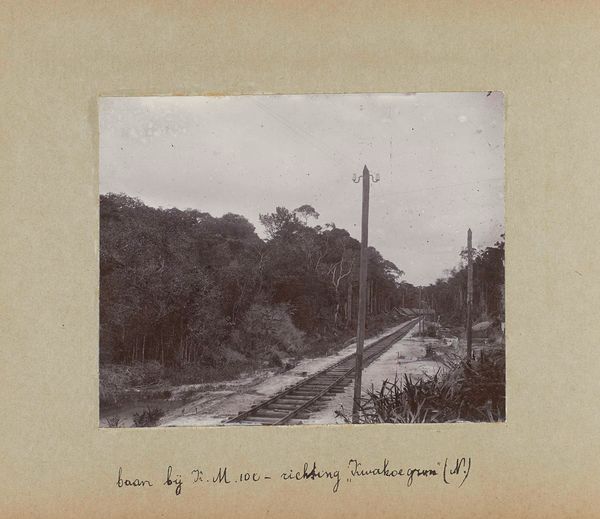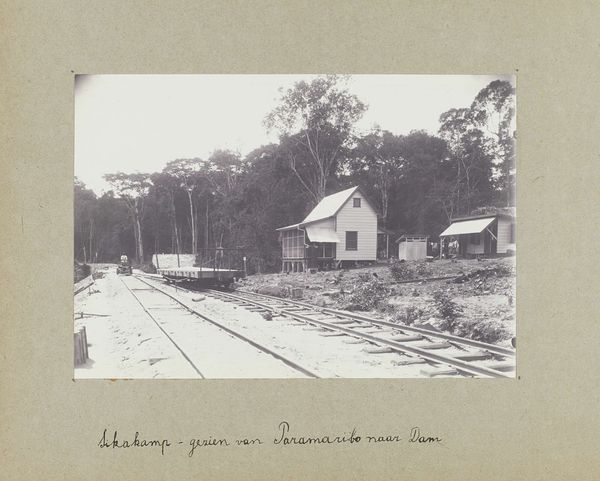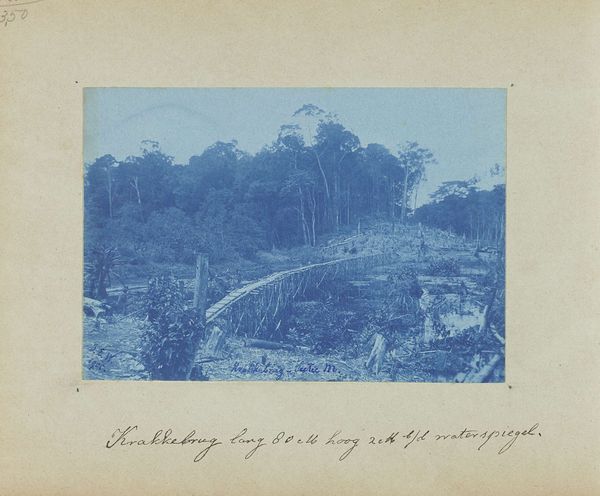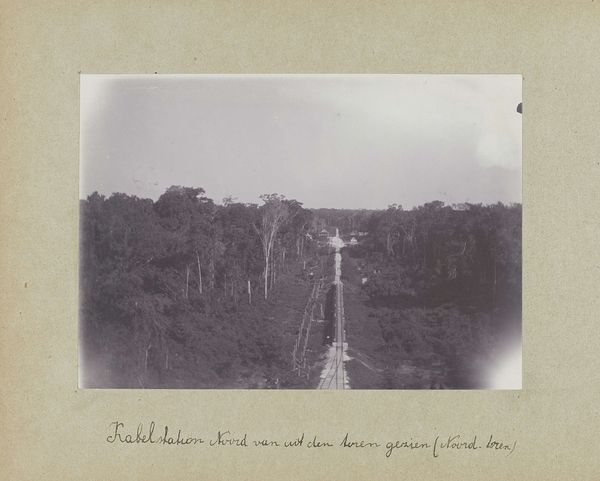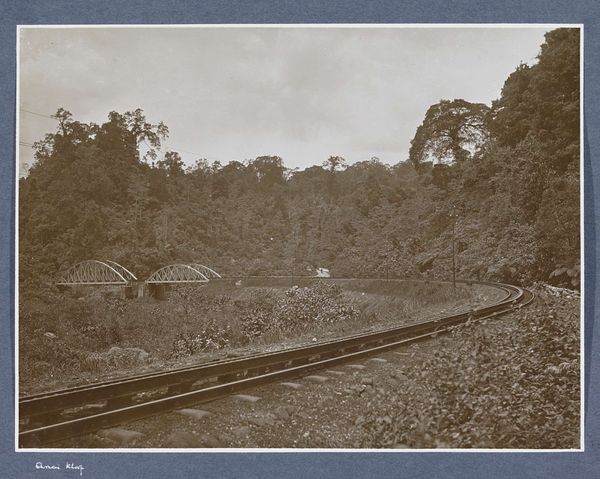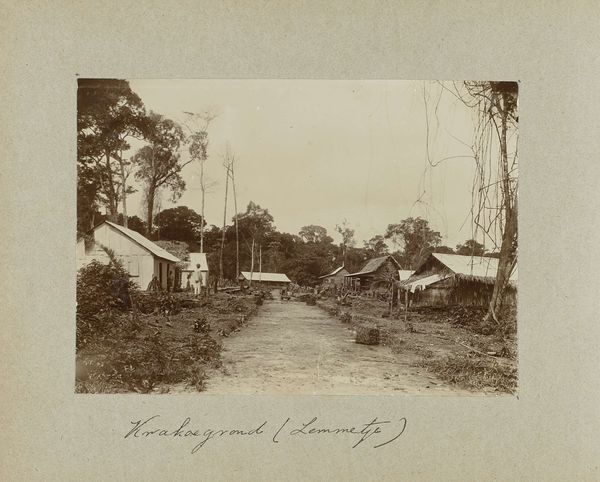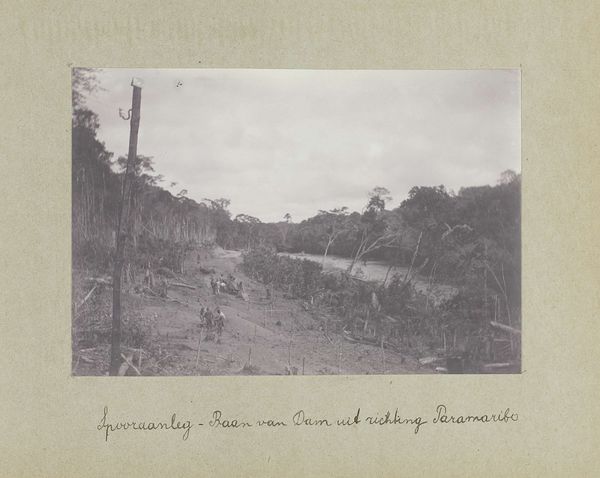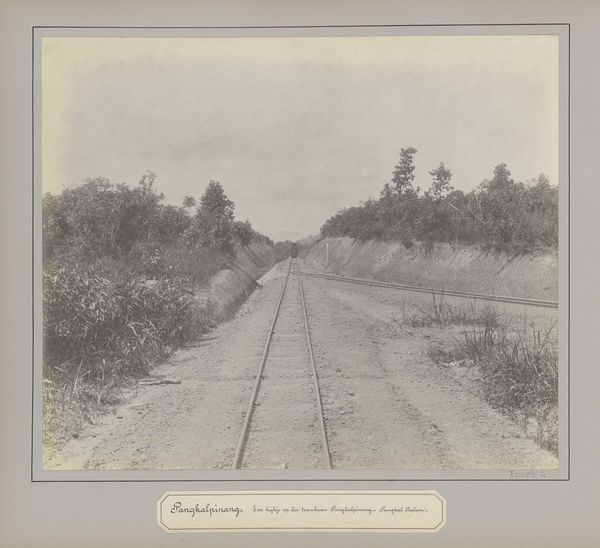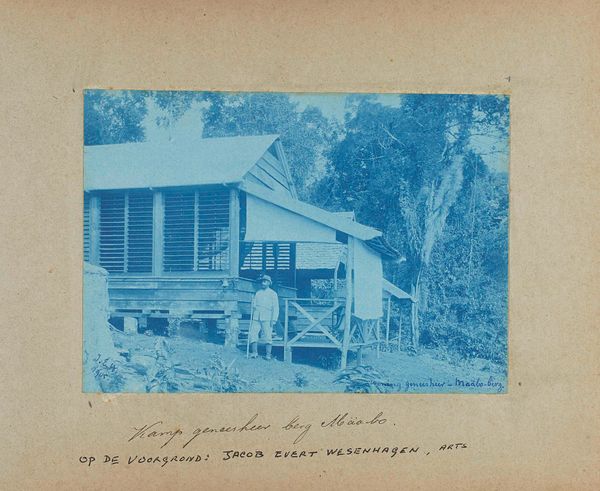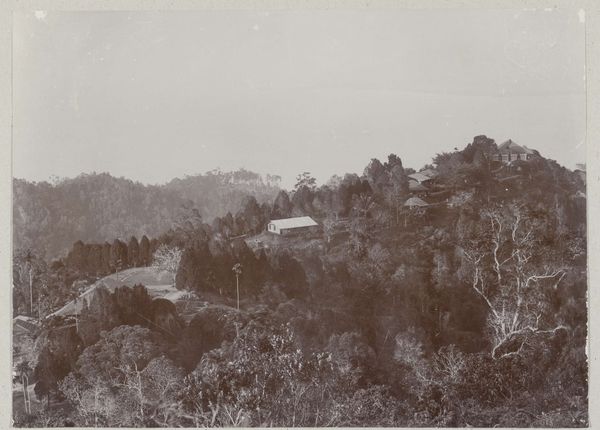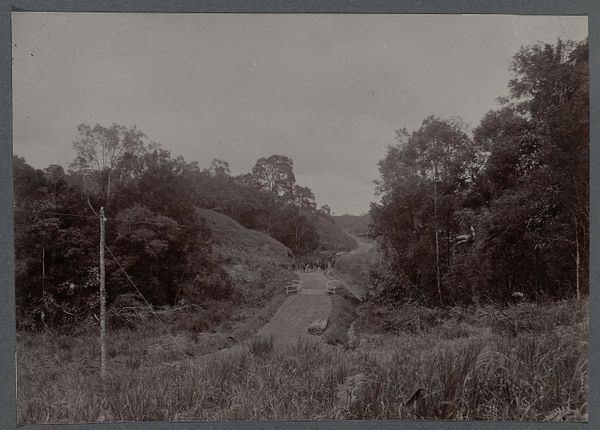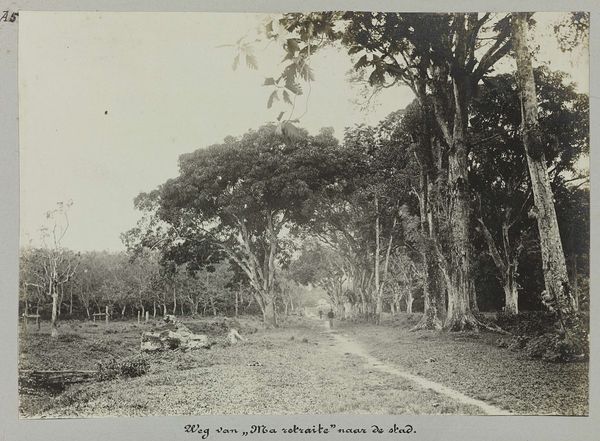
photography
#
aged paper
#
light pencil work
#
pictorialism
#
landscape
#
street-photography
#
photography
Dimensions: height 102 mm, width 170 mm
Copyright: Rijks Museum: Open Domain
Curator: Here we have a photograph entitled "Baan bij K.M. 100 - richting "de Jong" (Z.)," dating from 1905 to 1910, its author unfortunately unknown to us. What strikes you most about this landscape? Editor: The composition and scale create a strong sense of vanishing. That track relentlessly recedes into the horizon; it really emphasizes the desolation of the scene. It’s rather stark, a black-and-white image of a railway cutting through a landscape. Curator: Indeed. I think examining the material aspects here opens avenues to consider labor and construction in the early 20th century. What sort of environment required this kind of precise intervention? I suspect it involved some heavy industry. Editor: The track symbolizes more than mere physical construction; I'm seeing it as a conduit to somewhere. Consider the symbolic freight it carries: colonialism, trade, societal ambitions. The converging lines almost act as paths into an unseen destiny. There's a story unfolding. Curator: Good points. Note the photograph itself is not simply an observation, but an intervention into material reality. This method relies on resources such as silver and paper, the exploitation, transformation, and circulation of raw materials forming its base reality. Editor: And isn’t it intriguing how something like a railway can shift? In the 20th and 21st centuries, for some people that railroad will signal journeys of hope and opportunity while for others, it represents paths of dispossession, a potent mix of advancement and loss. Curator: A powerful reminder that this image is more than what we see on its surface: it involves people’s toil. If we keep examining these old photos we may unlock previously inaccessible details regarding labor practices, photographic material usage and global circulation networks that made an object like this possible! Editor: Precisely! We’ve journeyed along those tracks and into layers of history. Now the photo suggests much more to me than that first stark impression.
Comments
No comments
Be the first to comment and join the conversation on the ultimate creative platform.
